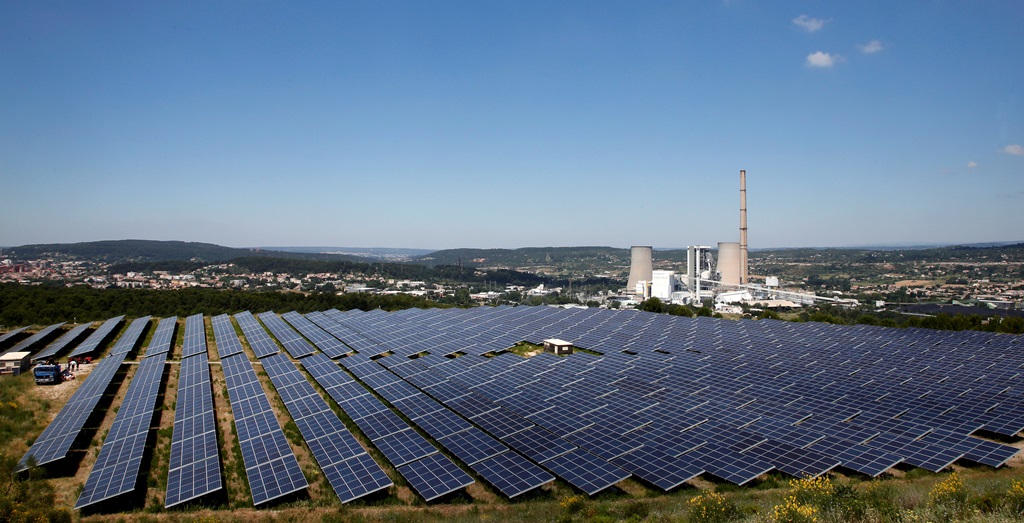RES Development: Implications for Security and Poland’s Foreign Policy

Renewables Growth and Its Significance
The share of renewables in electricity generation is growing, with photovoltaics (PV) and wind energy the most dynamic. Between 2007 and 2017, global electricity generation from PV and wind turbines increased nine times (four times in the EU alone). The company BP estimates that PV and wind’s share in electricity generation will grow to around 30% in 2040 (currently it’s less than 10%). PV and wind-energy growth is accompanied by investments in smart grid and energy storage, among others, which will stabilise the supplies of electricity generated from renewables, as well as electric vehicles (EV) to decarbonise the transport sector.
The factors contributing to renewables growth are decreasing costs (between 2010 and 2017 the costs of electricity generation from PV decreased by 73% and from wind turbines by 22%) and global climate policy aimed at limiting global warming in accordance with the Paris Agreement. The EU has set ambitious goals to reduce greenhouse gas emissions by 40% by 2030 (base year 1990) in part by increasing the share of renewables in the energy mix to a minimum of 32%.
The development of renewables will allow Poland to not only help achieve these targets but also limit the imports of both electricity and black coal, which would also improve Poland’s balance of trade, especially given the rising costs of generating electricity from coal. Coal imports to Poland increased from 8.3 to 19.6 million tonnes between 2016 and 2018 and electricity imports from 6.3 to 13.2 TWh between 2010 and 2017. In 2017 almost 80% of the electricity imports to Poland came from countries with a significant share of renewables in electricity generation—Germany (34%) and Sweden (58%)—while in Poland, 14.4% of electricity generation came from RES. The draft “Energy Policy of Poland until 2040” (PEP2040) sets goals to increase installed PV capacity from 0.9 GW in 2020 to 20.2 GW in 2040 and offshore wind turbines from none now to 10.3 GW (the first such facilities are planned to launch from 2025). Poland also aims to develop EVs, as stated in PEP2040 and the Partnership for Electromobility declaration from COP24 in Katowice.
Political Dimension
The development of renewables should mean less use of fossil fuels. However, it will accelerate the demand for some resources, such as rare earth elements (REE), including neodymium, used in wind turbine magnets or EVs, or nickel, cobalt, manganese, and lithium for batteries. The resources and production of these components are either diversified across several countries or concentrated in stable and democratic countries, which makes politically motivated disruption of supplies less probable (for instance, 60% of global lithium resources are located in Australia and Chile, which are also the biggest producers). However, some resources are located in unstable or authoritarian countries, such as cobalt, with 64% of production and 49% of the resource are located in the Democratic Republic of Congo, or REE, with more than 70% of production and 36% of resources in China. This creates risk for the security of supplies of these resources, stemming from either internal problems or state policy.
The Chinese authorities have limited REE exports before, arguing it was to conserve supplies; however, according to WTO findings from 2014, the export quotas introduced by the Chinese authorities were aimed to achieve industrial policy goals. China also tries to secure its own access to resources for renewables abroad. Thanks to foreign acquisitions, Chinese entities control about half of the global lithium supply. Russia (also an REE exporter) tries to pursue a similar policy. However, China, whose strategic goal is to dominate the global supply chain in renewables, is more effective than Russia, partly because China has the most capacity for REE production. Ore containing REE must undergo complex processing, such as purification and refining, and not many countries besides China have such capacity, for example, there are no industrial-scale plants in the EU for REE beneficiation while separation plants in Estonia and France are dependent on imports from China and others. China is also the top global PV producer, responsible for 60% of global production of batteries for EVs. China is also the biggest EV market: of the 3.1 million EVs in use in 2017, 1.2 million were in China, and estimates show that this year of the 2.6 million new EVs produced, 1.5 million will be sold in China.
Although renewables decentralise energy generation, their development is associated with new challenges in security. Fluctuation in wind and solar energy production encourages solutions to better manage supply and demand, namely smart grids and artificial intelligence. However, there are concerns about the modern grid’s vulnerability to cyberattack. The efficiency of this grid will be boosted by the development of 5G technology, which in turn raises concerns over infrastructure construction by Chinese companies. Another concern is the activity of Russian hackers, which in the past have successfully targeted Ukraine’s power grid, attacked German utilities, and attempted to penetrate the energy systems of exporters like Norway. The actions of non-state actors might create similar challenges.
EU Facing the Challenges
The Union is adapting its policy to counter these challenges. Since 2011, it has published a list of critical raw materials with the aim to encourage diversification of supply and special negotiations in trade agreements (see annex). The most recent list from 2017 includes 27 items, more than half of which are used in renewables and related technology. The European Commission also aims to improve the efficiency of the use of resources in renewables by supporting the “circular economy”—recycling some of these raw materials and re-using them.
The EU also is paying more attention to cybersecurity issues, among others, by recent changes in legislation and designating the European Union Agency for Network and Information Security (ENISA) as a cybersecurity agency. It will certify products, processes, and services related to these essential areas, such as the power grid (the certification will be valid for the whole EU). Certification is voluntary but after 2023, a decision will be made whether it should be mandatory. In this context, MEPs also have stressed the threat posed by China and the need to address 5G network security.
Recommendations
Renewables growth in the long term will require securing sufficient supplies of the relevant resources and reducing the risk of disruption in supply. This could be achieved by further exploration for resources, for example, in Sweden, Finland, or Greenland, and the involvement of EU countries and other states dependent on Chinese supplies. Cooperation in renewable energy development also could be an important part of relations with Ukraine (as a member of the Energy Community, it is committed to developing RES). Ukraine has resources of lithium and could become an important supplier. Besides diversifying the supply sources of resources for RES, Poland can support EU initiatives regarding the circular economy. Besides political support, financing specific investments in, for example, the “Juncker Plan”, could help achieve this.
As noted, the growth of RES also means new challenges related to cybersecurity. Poland could support initiatives within both the EU and NATO. The new cybersecurity agency and certification system create the opportunity for closer cooperation within the EU in this area. Poland could support cooperation between the EU and NATO on interoperability based on coherent standards for cyberdefence. This also might be supported by giving high priority to the digital dimension of the Three Seas Initiative as a contribution to the development of infrastructure that meets the highest security standards. The Polish authorities could also support information-sharing and the distribution of threat alerts between NATO and the EU.
Estonia’s particular experience with cybersecurity (e.g., blockchain technology) could be important for Poland. Denmark and Norway might also be important partners since they already cooperate with Poland in the oil and gas sector and are interested in further investments in RES.
Annex: Critical Raw Materials Used in RES (selected items), European Commission
|
Raw material |
Use in RES |
Main global producers |
Import reliance rate (EU) |
Main suppliers to the EU |
|
Rare Earth Elements |
Batteries, wind turbines |
China (95%) |
100% |
China (40%) U.S. (34%) Russia (25%) |
|
Magnesium |
Photovoltaics |
China (87%) U.S. (5%) |
100% |
China (94%) |
|
Antimony |
Photovoltaics |
China (87%) Vietnam (11%) |
100% |
China (90%) Vietnam (4%) |
|
Bismuth |
Photovoltaics |
China (82%) Mexico (11%) Japan (7%) |
100% |
China (84%) |
|
Natural graphite |
Photovoltaics |
China (69%) India (12%) Brazil (8%) |
99% |
China (63%) Brazil (13%) Norway (7%) EU (< 1%) |
|
Germanium |
Photovoltaics |
China (67%) Finland (11%) Canada (9%) U.S. (9%) |
64% |
China (43%) Finland (28%) Russia (12%) U.S. (12%) |
|
Gallium |
Photovoltaics |
China (85%) Germany (7%) Kazakhstan (5%) |
34% |
China (36%) Germany (27%) U.S. (8%) Ukraine (6%) South Korea (5%) Hungary (5%) |
|
Cobalt |
Batteries |
DRC (64%) China (5%) Canada (5%) |
32% |
Finland (66%) Russia (31%) |
Based on: Communication from the Commission to the European Parliament, the Council, the European Economic and Social Committee and the Committee of the Regions on the 2017 list of Critical Raw Materials for the EU, European Commission, 13 September 2017, https://eur-lex.europa.eu/legal-content/EN/TXT/HTML/?uri=CELEX:52017DC0490&from=EN. Note on the figures: the average for 2010-2014 as calculated by the EC. The examples of use in renewables includes prospective technologies.


